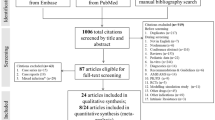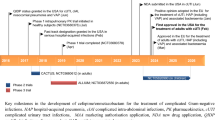Abstract
Intraperitoneal administration of antibiotics is recommended for the treatment of peritoneal dialysis-related peritonitis. However, little data are available on a possible interference between peritoneal dialysis fluids and the activity of antimicrobial agents. Thus, the present in vitro study set out to investigate the influence of different peritoneal dialysis fluids on the antimicrobial activity of ampicillin, linezolid, and daptomycin against Enterococcus faecalis. Time–kill curves in four different peritoneal dialysis fluids were performed over 24 h with four different concentrations (1 × MIC, 4 × MIC, 8 × MIC, 30 × MIC) of each antibiotic evaluated. Cation-adjusted Mueller–Hinton broth was used as the comparator solution. All four peritoneal dialysis fluids evaluated had a bacteriostatic effect on the growth of Enterococcus faecalis. Compared to the cation-adjusted Mueller–Hinton broth comparator solution, the antimicrobial activity of all antibiotics tested was reduced. For ampicillin and linezolid, no activity was found in any peritoneal dialysis fluid, regardless of the concentration. Daptomycin demonstrated dose-dependent activity in all peritoneal dialysis fluids. Bactericidal activity was observed at the highest concentrations evaluated in Dianeal® PDG4 and Extraneal®, but not in concentrations lower than 30 × MIC and not in Nutrineal® PD4 and Physioneal® 40. The antimicrobial activity of ampicillin and linezolid is limited in peritoneal dialysis fluids in vitro. Daptomycin is highly effective in peritoneal dialysis fluids and might, thus, serve as an important treatment option in peritoneal dialysis-related peritonitis. Further studies are needed to evaluate the clinical impact of the present findings.



Similar content being viewed by others
References
Jain AK, Blake P, Cordy P, Garg AX (2012) Global trends in rates of peritoneal dialysis. J Am Soc Nephrol 23:533–544
Li PK-T, Szeto CC, Piraino B, Bernardini J, Figueiredo AE, Gupta A et al (2010) Peritoneal dialysis-related infections recommendations: 2010 update. Perit Dial Int 30:393–423
Piraino B, Bernardini J, Brown E, Figueiredo A, Johnson DW, Lye W-C et al (2011) ISPD position statement on reducing the risks of peritoneal dialysis-related infections. Perit Dial Int 31:614–630
Salzer W (2005) Antimicrobial-resistant gram-positive bacteria in PD peritonitis and the newer antibiotics used to treat them. Perit Dial Int 25:313–319
Gorman T, Eisele G, Bailie GR (1995) Intraperitoneal antibiotics effectively treat non-dialysis-related infections. Perit Dial Int 15:283–284
van Esch S, Krediet RT, Struijk DG (2014) 32 years’ experience of peritoneal dialysis-related peritonitis in a university hospital. Perit Dial Int 34:162–170
Huang S-T, Chuang Y-W, Cheng C-H, Wu M-J, Chen C-H, Yu T-M et al (2011) Evolution of microbiological trends and treatment outcomes in peritoneal dialysis-related peritonitis. Clin Nephrol 75:416–425
Cho Y, Johnson DW (2014) Peritoneal dialysis-related peritonitis: towards improving evidence, practices, and outcomes. Am J Kidney Dis 64:278–289
Edey M, Hawley CM, McDonald SP, Brown FG, Rosman JB, Wiggins KJ et al (2010) Enterococcal peritonitis in Australian peritoneal dialysis patients: predictors, treatment and outcomes in 116 cases. Nephrol Dial Transplant 25:1272–1278
Huen SC, Hall I, Topal J, Mahnensmith RL, Brewster UC, Abu-Alfa AK (2009) Successful use of intraperitoneal daptomycin in the treatment of vancomycin-resistant enterococcus peritonitis. Am J Kidney Dis 54:538–541
Hassoun AA, Coomer RW, Mendez-Vigo L (2009) Intraperitoneal daptomycin used to successfully treat vancomycin-resistant enterococcus peritonitis. Perit Dial Int 29:671–673
Song IJ, Seo JW, Kwon YE, Kim YL, Lim TS, Kang EW et al (2014) Successful treatment of vancomycin-resistant enterococcus peritonitis using linezolid without catheter removal in a peritoneal dialysis patient. Perit Dial Int 34:235–239
The European Committee on Antimicrobial Susceptibility Testing (EUCAST) (2015) Routine and extended internal quality control as recommended by EUCAST. Version 5.0, valid from 2015-01-09. Home page at: http://www.eucast.org
Hermsen ED, Hovde LB, Hotchkiss JR, Rotschafer JC (2003) Increased killing of staphylococci and streptococci by daptomycin compared with cefazolin and vancomycin in an in vitro peritoneal dialysate model. Antimicrob Agents Chemother 47:3764–3767
Tobudic S, Poeppl W, Kratzer C, Vychytil A, Burgmann H (2012) Comparative in vitro antimicrobial activity of vancomycin, teicoplanin, daptomycin and ceftobiprole in four different peritoneal dialysis fluids. Eur J Clin Microbiol Infect Dis 31:1327–1334
Shalit I, Welch DF, San Joaquin VH, Marks MI (1985) In vitro antibacterial activities of antibiotics against Pseudomonas aeruginosa in peritoneal dialysis fluid. Antimicrob Agents Chemother 27:908–911
Schwartz MA, Buckwalter FH (1962) Pharmaceutics of penicillin. J Pharm Sci 51:1119–1128
Tybring L, Melchior NH (1975) Mecillinam (FL 1060), a 6beta-amidinopenicillanic acid derivative: bactericidal action and synergy in vitro. Antimicrob Agents Chemother 8:271–276
Greenwood D, O’Grady F (1973) FL 1060: a new beta-lactam antibiotic with novel properties. J Clin Pathol 26:1–6
McDonald WA, Watts J, Bowmer MI (1986) Factors affecting Staphylococcus epidermidis growth in peritoneal dialysis solutions. J Clin Microbiol 24:104–107
Tobudic S, Kratzer C, Poeppl W, Vychytil A, Burgmann H (2011) Impact of various peritoneal dialysis solutions on the growth of common bacterial and yeast pathogens. Perit Dial Int 31:688–692
Richards GK, Gagnon RF, Obst G, Kostiner GB (1993) The effect of peritoneal dialysis solutions on rifampin action against Staphylococcus epidermidis in the fluid and biofilm phases of growth. Perit Dial Int 13:S341–S344
McCormick EM, Echols RM (1987) Effect of peritoneal dialysis fluid and pH on bactericidal activity of ciprofloxacin. Antimicrob Agents Chemother 31:657–659
Patel RP, Li K, Shastri M, Wanandy T, Jose MD (2015) Stability of ampicillin and amoxicillin in peritoneal dialysis solutions. Am J Health Syst Pharm 72:13–14
Roberts DM, Fernando G, Singer RF, Kennedy KJ, Lawrence M, Talaulikar G (2011) Antibiotic stability in commercial peritoneal dialysis solutions: influence of formulation, storage and duration. Nephrol Dial Transplant 26:3344–3349
Manley HJ, McClaran ML, Bedenbaugh A, Peloquin CA (2002) Linezolid stability in peritoneal dialysis solutions. Perit Dial Int 22:419–422
Parra MA, Campanero MA, Sádaba B, Irigoyen A, García-López L, Fernandez-Reyes MJ et al (2013) Effect of glucose concentration on the stability of daptomycin in peritoneal solutions. Perit Dial Int 33:458–461
Peyro Saint Paul L, Albessard F, Gaillard C, Debruyne D, Ryckelynck J-P, Coquerel A et al (2011) Daptomycin compatibility in peritoneal dialysis solutions. Perit Dial Int 31:492–495
Cozens RM, Tuomanen E, Tosch W, Zak O, Suter J, Tomasz A (1986) Evaluation of the bactericidal activity of beta-lactam antibiotics on slowly growing bacteria cultured in the chemostat. Antimicrob Agents Chemother 29:797–802
Tuomanen E, Cozens R, Tosch W, Zak O, Tomasz A (1986) The rate of killing of Escherichia coli by beta-lactam antibiotics is strictly proportional to the rate of bacterial growth. J Gen Microbiol 132:1297–1304
Eagle H, Musselman AD (1948) The rate of bactericidal action of penicillin in vitro as a function of its concentration, and its paradoxically reduced activity at high concentrations against certain organisms. J Exp Med 88:99–131
Stille W, Uffelmann H (1973) Paradoxic bactericidal effect of penicillins on enterococci (Eagle effect). Dtsch Med Wochenschr 98:611–613
Mascio CTM, Alder JD, Silverman JA (2007) Bactericidal action of daptomycin against stationary-phase and nondividing Staphylococcus aureus cells. Antimicrob Agents Chemother 51:4255–4260
Bahte SK, Bertram A, Burkhardt O, Martens-Lobenhoffer J, Goedecke V, Bode-Böger SM et al (2010) Therapeutic serum concentrations of daptomycin after intraperitoneal administration in a patient with peritoneal dialysis-associated peritonitis. J Antimicrob Chemother 65:1312–1314
Acknowledgments
The authors thank Heidelinde Schranz from the Department of Internal Medicine I, Division of Infectious Diseases and Tropical Medicine, Medical University of Vienna for the valuable suggestions, excellent technical assistance, and support in the microbiological workup.
Funding
This work was supported by the Institute of Nephrology and Hematooncology of the Karl Landsteiner Society.
Conflict of interest
No conflicts of interest to declare.
Author information
Authors and Affiliations
Corresponding author
Rights and permissions
About this article
Cite this article
Kussmann, M., Schuster, L., Zeitlinger, M. et al. The influence of different peritoneal dialysis fluids on the in vitro activity of ampicillin, daptomycin, and linezolid against Enterococcus faecalis . Eur J Clin Microbiol Infect Dis 34, 2257–2263 (2015). https://doi.org/10.1007/s10096-015-2477-8
Received:
Accepted:
Published:
Issue Date:
DOI: https://doi.org/10.1007/s10096-015-2477-8




